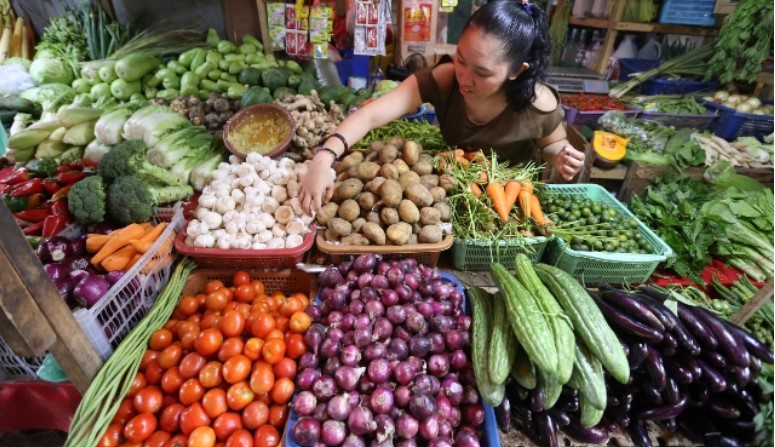
The Bangko Sentral ng Pilipinas (BSP) forecasts March 2024 inflation could be a low of 3.4 percent which was the same rate in February, or climb to a high of 4.2 percent due to upside price pressures from rice, meat, electricity and fuel.
In a statement Monday, April 1, the BSP’s delayed month-ahead inflation forecast – scheduled to be released last March 27 – noted that inflation may increase from 3.4 percent in February because of the sustained hikes in the prices of rice and meat, as well as the higher domestic oil prices and electricity rates.
The BSP said these are “the primary sources of upward price pressures for the month” of March.
What could pull the consumer price index (CPI) down or at very least settle at 3.4 percent is the lower prices of fruits, vegetables and fish. The relatively strong peso at P55 vis-à-vis the US dollar is also seen to contribute to downward price pressures, said the BSP.
“The BSP will continue to monitor developments affecting the outlook for inflation and growth in line with its data-dependent approach to monetary policy decision-making,” said the central bank.
The BSP’s next Monetary Board policy rate meeting is on April 8. This was an adjusted date since the original schedule was a Thursday, April 4. The BSP moved the day for the policy meeting to adjust to the April 5 inflation report.
BSP Governor Eli M. Remolana Jr. said in March that they are more watchful of rice prices and its effect on monetary policy. They are also continuously studying how large of an impact rice prices have on inflation expectations and second-round effects because of the El Niño dry weather phenomenon.
Remolona said the BSP consider rice prices as having a disproportionate impact on expectations “beyond their weight in the CPI (and) because of that, we have to monitor rice prices – mainly rice prices since there are other commodities affected by El Niño.”
The BSP has been relying on the government’s non-monetary measures to curb supply side pressures on prices particularly since the El Niño weather is expected to last until the second quarter this year. The adverse impact of the weather phenomenon on agricultural production will likely hike inflation above the target range from the second quarter.
For now, inflation upside risks continue to be the higher transport charges, increased electricity rates, higher oil and domestic food prices, and the additional impact on food prices of a strong El Niño episode, said the BSP.
As of the last Monetary Board policy meeting on Feb. 15, the BSP’s risk-adjusted inflation forecast for 2024 is 3.9 percent and 3.5 percent for 2025. The year-to-date inflation is at 3.1 percent after February’s CPI release.
The higher rice prices in the international market was due mainly to the El Niño which impacted on the global supply-demand. The dry weather affected major rice-exporting countries such as Thailand while India’s export restrictions on rice pushed prices even higher. India is the biggest rice exporter on the planet. — Lee C. Chipongian
*****
Credit belongs to: www.mb.com.ph
 Atin Ito First Filipino Community Newspaper in Ontario
Atin Ito First Filipino Community Newspaper in Ontario





